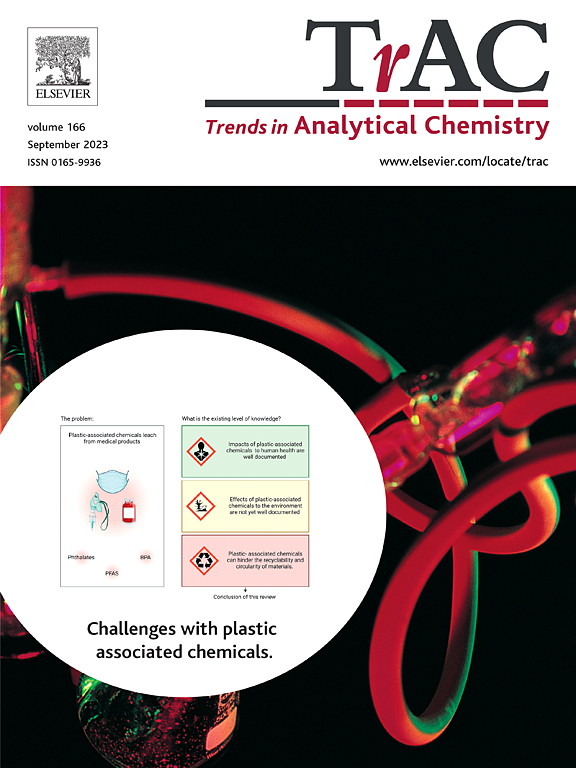Multidimensional single-cell analysis: Diverse strategies and emerging applications in the life sciences
IF 11.8
1区 化学
Q1 CHEMISTRY, ANALYTICAL
引用次数: 0
Abstract
Multidimensional single-cell analysis is an outstanding tool in life sciences, enabling the study of diverse biomolecules, including nucleic acids, epigenetic factors, proteins, and metabolites. The main strategies in this field are nucleic acid amplification-based sequencing and mass spectrometry (MS)-based molecule detection. With the commercialization of high-throughput sequencing platforms and advances in MS-based molecule detection, single-cell omics analyses have rapidly developed, enabling the exploration of single-cell metabolomics and proteomics. This work provides a comprehensive summary of the diverse strategies employed in multidimensional single-cell analysis, and particularly emphasizes the application of ultra-sensitive MS techniques, which provide new tools for single-cell nucleic acid analysis. It also highlights the discovery of functional nucleic acids, which offer novel alternatives for detecting metabolites and proteins at the single-cell level using amplification techniques. Additionally, the applications of these methods in life sciences, along with the prospects for multidimensional single-cell evaluation, are thoroughly discussed. It is anticipated that the continued evolution of multidimensional single-cell analysis will significantly advance the precision and depth of various research domains within life sciences.
求助全文
约1分钟内获得全文
求助全文
来源期刊

Trends in Analytical Chemistry
化学-分析化学
CiteScore
20.00
自引率
4.60%
发文量
257
审稿时长
3.4 months
期刊介绍:
TrAC publishes succinct and critical overviews of recent advancements in analytical chemistry, designed to assist analytical chemists and other users of analytical techniques. These reviews offer excellent, up-to-date, and timely coverage of various topics within analytical chemistry. Encompassing areas such as analytical instrumentation, biomedical analysis, biomolecular analysis, biosensors, chemical analysis, chemometrics, clinical chemistry, drug discovery, environmental analysis and monitoring, food analysis, forensic science, laboratory automation, materials science, metabolomics, pesticide-residue analysis, pharmaceutical analysis, proteomics, surface science, and water analysis and monitoring, these critical reviews provide comprehensive insights for practitioners in the field.
 求助内容:
求助内容: 应助结果提醒方式:
应助结果提醒方式:


